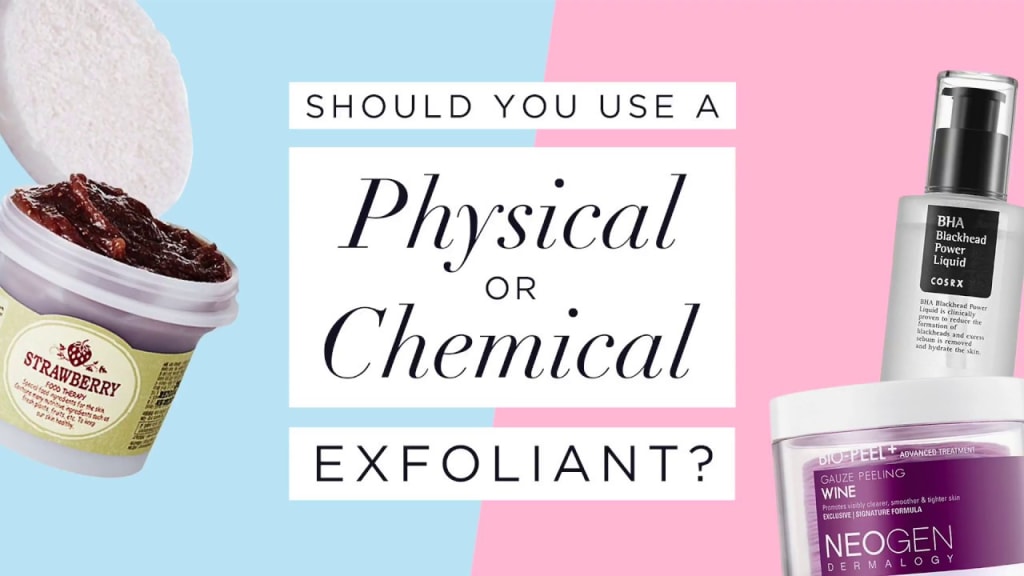
If the word "exfoliate" only triggers images of vigorous scrubs and raw skin in your mind, then it is indeed time to re-educate your skincare vocabulary with this article.
Around a decade ago, the skincare community started to introduce and emphasize exfoliation as part of our skincare routine. However, the exfoliating products in the market were primarily physical exfoliants, until this year. 2018 has marked the start of the chemical exfoliant era. Let’s delve deeper into this concept, which might just be the very step that is missing in your current routine so you can finally get that legendary glow.
Exfoliation and the Types of Exfoliants
At the center of its definition, exfoliation is about getting rid of the dead skin cells and grime that accumulates on your skin's surface, thereby polishing and revealing its natural glow. At the same time, since a literal layer of hindrance has been removed from the surface, the serums, toners and moisturizers can now reach the skin faster and absorb better. The overall effect is brighter skin with a softer, smoother texture.
The physical exfoliants are the ones that we are already very familiar with—the loofahs and the scrubs with granular ingredients such as sugar, clay particles, and microbeads. A more recent physical exfoliating innovation is the electronic facial cleanser with brush heads or silicone touch-points. These products are termed physical exfoliants because they physically slough off dead skin cells.
The chemical exfoliants, on the other hand, focus on utilizing natural enzymes and acids to "react” and “dissolve”(ie. a more chemically correct description is bond-breaking reaction) the dead skin cells, as well as the proteins that clog up the pores (basically the whiteheads and blackheads), by reaching them at a deeper skin level than their physical cousins. The result is a gleaming skin surface with cleaner pores. To achieve the same level of penetration, the physical exfoliants will require addition abrasion and rubbing which brings along a whole new sets of issues for the skin (ie. inflammation, fine lines, heightened sensitivity etc.). That is why the chemical exfoliants are increasingly being advocated as the preferred form of exfoliation.
So What Are the Chemical Exfoliants?
There are two types of chemical exfoliants: AHA (alpha-hydroxy acids) and BHA (beta-hydroxy acids), which are just two big umbrella categories that branch out to many more specific families of sub-acids and enzymes. Both come in clear liquid form and are capable of improving the skin’s dullness but they differ in their characteristic and, hence, suitability to certain skin types in some cases.
AHAs are found in fruits, the two most common being glycolic and lactic acids. AHAs work on skin’s surface, and are water soluble. Many people with normal to dry skin have shown favorable result with AHAs, which has a relatively better ability to enhance hydration on top of the exfoliation.
BHA differs in the sense that it is oil-soluble instead. Due to this characteristic, it can thus penetrate better through the sebaceous skin layer, making it more suitable for normal to oily skin combinations. The most common BHAs is the salicylic acid, which has anti-inflammatory activity, making it suitable for pimple / acne-prone users.
How To Use Chemical Exfoliants
We are all very familiar with the rubbing and scrubbing that comes along with physical exfoliants, so what about chemical exfoliants?
Well this is my favourite part—you just pour the liquid product onto your palms or cotton pads, pat it gently across your face, AND THAT’S IT! It is just like using any toner.
The procedure is so simple that sometimes I find it hard to believe it will even do anything for my skin at all, but the results I get the next morning amaze me every single time.
The next time you start your skincare shopping, maybe you can keep in mind of checking out some the products featuring AHAs and BHAs. Just remember to use in moderation and always observe how your skin reacts to the products, adjusting the usage to get that ideal results.
About the Creator
Judy Mae
I put words on the internet.






Comments
There are no comments for this story
Be the first to respond and start the conversation.